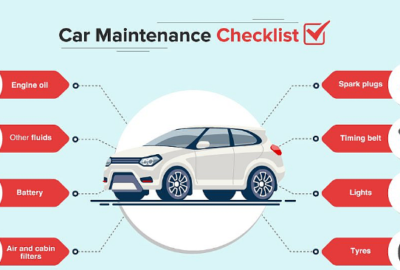Your Comprehensive Guide to Buying a Used Car
Are you in the market for a reliable used car but feeling overwhelmed by the process? You’re not alone. With millions of used vehicles changing hands each year, finding the right one requires careful planning and consideration. Whether you’re a seasoned buyer or a first-timer, here’s a step-by-step guide to help you navigate the journey confidently.
1. Determine Your Budget
Before diving into the sea of used cars, it’s crucial to establish your budget. According to industry expert Ronald Montoya, a good rule of thumb is to cap your car payment at 10% of your take-home pay. This ensures you can comfortably manage ongoing expenses such as maintenance, insurance, and fuel costs. Remember, used cars may require additional attention, so budgeting for unexpected repairs is wise.
2. Build a Target List of Vehicles
Research is key when narrowing down your options. Identify several models that fit your needs and budget. Popular choices like the Honda CR-V and Toyota RAV-4 are known for reliability, but alternatives like the Ford Escape or Kia Sportage offer value at a lower price point. Creating a list allows you to compare features, pricing, and availability across different sellers.
3. Check Prices
Understanding market prices is essential to ensure you’re getting a fair deal. Prices can vary based on where you shop—private-party sellers typically offer lower prices compared to certified pre-owned (CPO) cars from dealerships, which come with warranties and better condition guarantees. Utilize resources like Edmunds’ pricing data to gauge what others are paying for similar vehicles in your area.
4. Locate Used Cars for Sale
Take advantage of online tools to simplify your search. Websites like Edmunds provide comprehensive used car inventories where you can filter by price range, mileage, and specific features. This helps you pinpoint vehicles available nearby, whether they’re at new-car dealerships, independent lots, or used-car superstores.
5. Check the Vehicle History Report
When considering a specific vehicle, always request a vehicle history report. This document, accessible via the vehicle identification number (VIN), reveals critical information such as past accidents, title status (like salvage titles), and maintenance records. Services like AutoCheck and Carfax offer reliable reports that safeguard against potential hidden issues.
6. Contact the Seller
Before rushing to see a car, establish communication with the seller. This initial contact allows you to inquire about the car’s condition, maintenance history, and reasons for selling. For private-party sellers, it’s an opportunity to ask detailed questions that may influence your decision. Confirm the car’s availability and schedule a convenient time for a viewing and test drive.
7. Test-Drive the Car
A test drive is your chance to evaluate the car’s performance firsthand. Pay attention to comfort, visibility, and driving dynamics. Check for warning lights, unusual noises, and overall handling. This step is crucial in assessing whether the car meets your expectations and feels right for your driving needs.
8. Have the Car Inspected
If you’re seriously considering a purchase, consider having a mechanic inspect the vehicle. A professional inspection can uncover potential issues that may not be apparent during a test drive. Most sellers, especially private-party ones, will accommodate this request to reassure buyers of the car’s condition and reliability.
9. Negotiate a Good Deal
Negotiating the price is an expected part of buying a used car. Armed with research on market prices and the car’s condition, make a reasonable offer below your maximum budget. Be prepared to negotiate back and forth until both parties reach a fair agreement. A respectful and informed approach often leads to a satisfactory deal for both buyer and seller.
10. Complete the Paperwork
Once you’ve agreed on a price, it’s time to finalize the transaction. If purchasing from a dealership, this involves signing the sales contract in the finance and insurance office. Review all documents carefully, including any additional items like warranties or service plans. For private-party sales, ensure the title and registration transfer correctly to avoid post-sale complications.
Conclusion
Buying a used car doesn’t have to be daunting. By following these steps—from setting a budget to completing paperwork—you can navigate the process confidently and find a vehicle that meets your needs and budget. Remember, thorough research and attention to detail are your allies in making a smart and informed purchase decision. Happy car hunting!
Whether you’re eyeing a sleek sedan or a practical SUV, understanding the process empowers you to make the right choice. Start your journey with confidence, and soon you’ll be driving off in the perfect used car for you.






